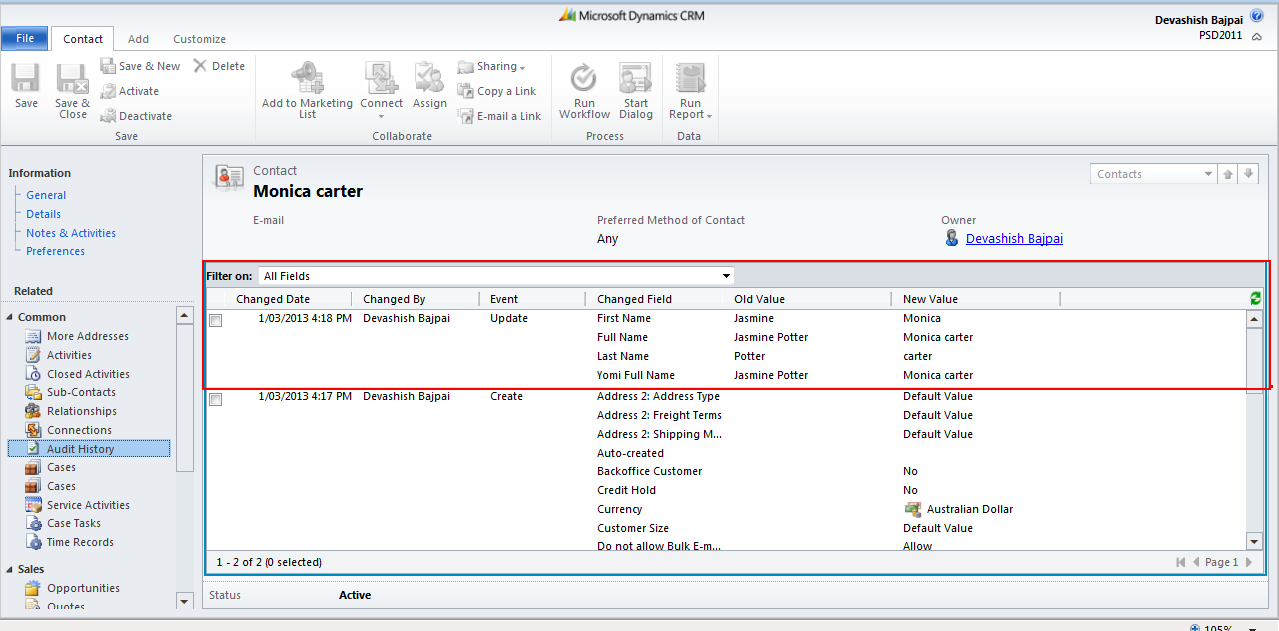Audit History is an Out Of Box functionality of Microsoft CRM 2011 that is used to track the changes in a whole entity or particular fields on entity. For example you can track that who has changed address field of a contact record, what is old & new value of address & when it has been changed etc. You can see these by going to “Audit History” in the left pane of an entity in which auditing is enabled.

Below are the steps to set auditing for a whole entity or for particular fields on an entity:
First of all ensure that global Audit setting is turned On. By default, in MS CRM 2011 it is turned OFF.
Go to “Setting” module -> “Auditing” section -> “global Audit Setting”.

A System setting web page dialog box will be opened. Select “Auditing” tab and check the check box “Start Auditing” and click “Ok”.

Below are the steps to set Auditing on entity or fields on an entity.
Go to “Setting” module -> “Auditing” section -> “Entity and Field Audit Settings”

A solution window will be opened. Select an entity for which you need to set auditing.
Suppose we need to set auditing for Contact Entity. Select “Contact” in the left pane & check the “Auditing” check box. By checking “Auditing” check box all the fields on contact entity will be under tracking. Now publish this page.
So any field on contact entity that is changed will be tracked.

You can also disable the auditing on field level. It means auditing can be set on field level. To do this expand the “Contact” entity in the solution, click on “Fields” & select the field which has to be disabled for auditing.

A page shown below will be opened. Click “Enable” or “Disable” radio button accordingly & save the page and then publish that entity in which this field exist.

Don’t use auditing feature when you import data. Also don’t apply auditing feature on read only fields because auditing takes disk space in the system.